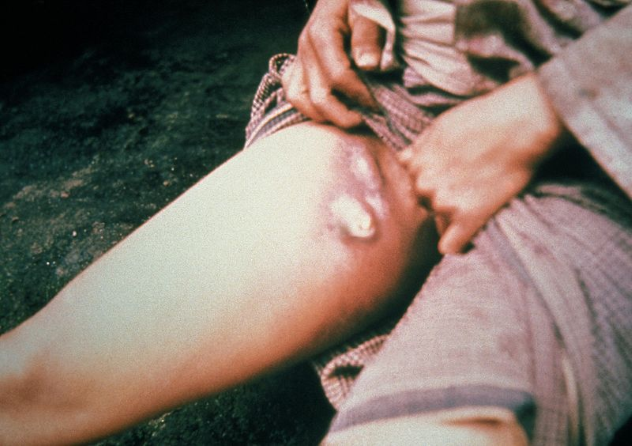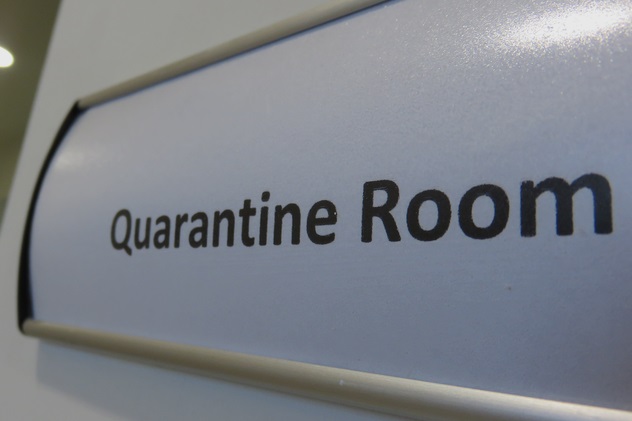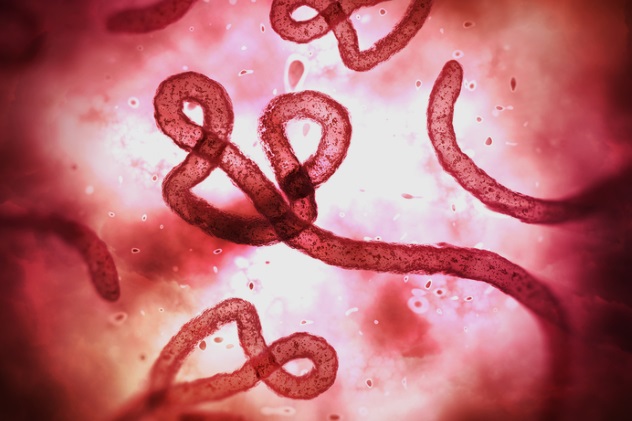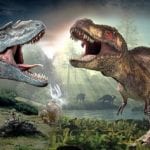 Movies and TV
Movies and TV  Movies and TV
Movies and TV  History
History 10 Things You Never Knew About Presidential First Ladies
 Movies and TV
Movies and TV 10 Zombie Movies That Will Actually Terrify You
 Humans
Humans 10 Times Scientists Were Absolutely Sure… and Absolutely Wrong
 Our World
Our World 10 Pivotal Moments for Life on Earth
 Movies and TV
Movies and TV 10 Most Realistic Medical TV Shows of All Time
 Creepy
Creepy 10 Eerie & Mysterious Ghosts of the Pacific Coast
 Weird Stuff
Weird Stuff 10 Typos That Accidentally Changed History
 History
History 10 Times Trickery Won Battles
 Technology
Technology 10 Awesome Upgrades to Common Household Items
 Movies and TV
Movies and TV 10 Movie Flops That Found Their Way to Cult Classic Status
 History
History 10 Things You Never Knew About Presidential First Ladies
 Movies and TV
Movies and TV 10 Zombie Movies That Will Actually Terrify You
Who's Behind Listverse?

Jamie Frater
Head Editor
Jamie founded Listverse due to an insatiable desire to share fascinating, obscure, and bizarre facts. He has been a guest speaker on numerous national radio and television stations and is a five time published author.
More About Us Humans
Humans 10 Times Scientists Were Absolutely Sure… and Absolutely Wrong
 Our World
Our World 10 Pivotal Moments for Life on Earth
 Movies and TV
Movies and TV 10 Most Realistic Medical TV Shows of All Time
 Creepy
Creepy 10 Eerie & Mysterious Ghosts of the Pacific Coast
 Weird Stuff
Weird Stuff 10 Typos That Accidentally Changed History
 History
History 10 Times Trickery Won Battles
 Technology
Technology 10 Awesome Upgrades to Common Household Items
10 Facts That Will Change How You View The Black Death
The Black Death was a pandemic that swept through not just Europe, but also parts of Asia and Africa, leaving an absolutely devastating death toll in its wake. Tens of millions of people died at the very least, and the populations hit were so decimated that they didn’t recover to previous levels for centuries.
During the time period of the Black Death, written records weren’t kept nearly as well as they are now (if they were at all), and the huge and constant loss of life meant that much knowledge of exactly how things happened is lost. This means that many rumors have spread about how it occurred, and many popular accounts are greatly exaggerated. Many of the common claims about the Black Death are either false or not entirely true.
10 The Catholic Church Has Been Blamed For The Black Death

The Catholic Church has been one of the most powerful organizations in the world for quite some time, so it is perhaps not too surprising that there are a lot of conspiracy theories about it, and it has become a popular scapegoat for many situations. In terms of the Black Death, no one is suggesting that the church tried specifically to cause it, but they do suggest that the church’s alleged backward thinking and practices helped it spread more effectively and cause more deaths overall. The claims say that the disease came mostly to humans from fleas and that these fleas came from rats. At this point, the popular theory does seem to unravel a bit, as fleas could travel along with many other animals besides rats.
Regardless, some like to claim that due to Catholic superstitions, cats were originally blamed for the Black Death. This led to a mass culling of cats, which caused the rats to spread and populate far quicker than they normally would have. According to popular mythology, this massive destruction of felines directly helped the Black Death get off the ground as a major pandemic, and it was all the church’s fault.
The problem with this theory—apart from many historians not believing that rats had as big a role as people claim—is that there is really no evidence of this mass cat culling due to Catholic superstition. It’s an oft-repeated story by cat lovers on the Internet to promote the virtues of their beloved choice of pet, but none of it appears to be sourced on anything solid.
9 Terrible Hygiene And Sanitation Practices Were A Huge Factor

Some people don’t like to picture it because it’s not a very romantic part of medieval history, but many researchers believe that one of the biggest reasons the plague spread so easily and with such deadly purpose was not just lack of advanced medical knowledge and preponderance of rats, but the fact that the hygiene habits of the time period were absolutely vile.
Now, we don’t mean that people didn’t bathe or try to stay clean, but rather that the infrastructure was lacking to a point that would be horrifying to most modern people today. Modern sewers and other sanitation didn’t exist, modern trash pickup was not a thing, and refrigeration along with proper knowledge of food safety was also something that people of the time seriously lacked.
Take, for example, the conditions in Bristol, the second-biggest city in Britain when plague hit Europe. It is said that the city was overpopulated and that there were open ditches with people’s waste and other filth running through them, without anything covering them at all. The outhouses were absolutely disgusting, and meat and fish were left out in the open, with flies all over them. And not only was the well water contaminated, but the booze also wasn’t safe to drink much of the time, either. According to historians, these were normal conditions that even the rich had to endure during this time period. With these conditions, it’s not too surprising that an pandemic was able to quickly spread.
8 The Role Of Rats Is Greatly Exaggerated

For many people, the cause of the Black Death is a combination of medieval people being disgusting and way too many rats around. However, researchers who have been studying the evidence for a long time smelled a rat, and after a lot of sniffing around, they came up with a completely different conclusion. Yersinia pestis, the bacterium usually considered responsible for the outbreak of the plague, isn’t usually native to Europe but actually comes from Asia.
After the first outbreak of the plague that killed millions across the continents of Europe, Asia, and Africa, the plague was still taking mass victims. It would pop up occasionally across Europe and do damage again before disappearing for a bit. Many people attributed this to rises and falls in the rodent population increasing the incidence of plague.
However, researchers have discovered that the real culprit was likely climate shifts in Asia. As their climate fluctuated throughout the years, it created conditions more likely for carriers, especially fleas, to breed like crazy and to potentially find their way to Europe again. While this doesn’t mean that rats hold no responsibility at all, they are not nearly as dangerous a carrier as the flea itself, which can bother humans directly if its normal sources of sustenance are somehow interrupted, or if there are too many fleas for them to all eat from nearby smaller animals.
7 Some May Have Ended Up With HIV Resistance Genes

The plague swept through Europe and killed millions of people. Afterward, there were multiple repeated outbreaks over the years that continued to occasionally cause devastation until we finally figured out a way to keep the deadly disease under control. During that time, people from some regions of Europe had to either get extremely lucky or hope for an evolutionary genetic mutation to help their progeny survive the constant onslaught of deadly disease. While some people likely did simply get lucky by practicing extremely good hygiene and staying away from sick people, it seems that some people may have evolved in order to fight against it.
Researches have long been trying to find ways to beat HIV, and recently, they found out that some people seem to be entirely or almost completely immune. They have a rare mutation that stops the bad cells from ever entering their white blood cells. Scientists have been unsure how or why they have this mutation, but it certainly does seem to be advantageous in that situation. One researcher studying the issue has looked at the history and believes that the mutation likely came about due to struggles against the plague epidemics in Europe.
While understanding the mechanism behind this rare mutation could certainly help treat or prevent HIV in the future, it is hard to say for certain if there is actually a link to the plague. While there is interesting reason to believe it’s possible, the mutation only seems to occur in some Europeans. Despite Africa and Asia also having been hit incredibly hard by the Black Death, they do not seem to have the mutation in any quantifiable numbers.
6 ‘Ring Around The Rosie’ Has Nothing To Do With The Black Death

Just about everyone has heard the nursery rhyme “Ring Around the Rosie” at least a few times in their life. It’s a nearly ubiquitous little song that has always been a kid favorite. After singing, they get to all fall down and be silly at the end. While it may just be an innocent song to the kids who enjoy it, some adults are convinced that it is much more serious. A great number of people are certain that “Ring Around the Rosie” is actually a song talking about the Black Death in Europe.
The claims usually suggest that the posies are either to honor the dead or to somehow cover up the bad smell. The ashes are a fairly self-explanatory reference to dead people, and “we all fall down” is supposed to be a reference to the fact that such an insane amount of people died. However, there is no evidence at all that the poem had anything to do with the plague.
There are multiple variations of it, the earliest of which showed up in the 1800s. That’s hundreds of years after we pretty much had the plague under control, so it’s quite unlikely that the two ever had anything to do with each other. There is no evidence of what the real meaning for the song was, but we know that it was written much more recently, so it couldn’t be about the plague and was probably just supposed to be fun.
5 It Completely Changed the Economy Of Europe And Hastened The Renaissance

While the Black Death was an incredible tragedy in human history, when millions of people who could have gone on to do great things were lost, no tragedy usually vanishes without some good coming out of it. At the time, as we mentioned earlier, some parts of Europe were extremely overpopulated. This not only made it easier for the plague to proliferate, but it also ensured that labor was not really worth all that much in terms of value, because there were far more laborers than were really needed.
After the plague killed millions, things suddenly changed. With so few workers compared to before, regular farmers and other peasants were now earning much more money. Merchants were also able to make a better living, and any craftsmen of skill became quite important, as there was now a shortage of living skilled and unskilled laborers.
While this can’t be said to be the only factor that led to the Renaissance, it can easily be said that it at least greatly hastened it. With regular citizens having way more economic power and being more on the level of those of noble birth, the old societal system quickly started to give way to something entirely new. While it may have been very bad for Europe and the world in a lot of ways, humanity showed its ability to flourish instead of flounder when hit by a serious crisis.
4 The Plague Still Kills A Handful Of People Every Year

Some people think of the Black Death as something long gone like smallpox, but unfortunately, as many people have learned with the absurd anti-vaxxer, movement, it can be very hard to permanently eliminate a disease, and it may decide to come raging back to cause trouble again when you least expect it. Yersinia pestis was never considered a truly extinct disease, but it still crops up every now and then even in North America, a continent not traditionally known for the plague.
Some trace the existence of Yersinia pestis in North America to the port of San Francisco many years ago. Supposedly, in order to make as much money as possible, the city was allowing people through without properly checking them. This allowed the plague into the city, and since then, it has made its way to the US Southwest, where it has been occasionally causing trouble ever since.
It may still be surprising that some people die of the plague, or even contract it, in this day and age, but it is an extremely deadly disease. It can easily kill in a few days if not properly treated, and because it’s such an old disease that most people are unfamiliar with, they may wait too long to get the medicine and help they need.
The plague may be mostly vanquished, but it still exists, and it still kills every year. If we are not prepared, it could still attempt to strike back and cause yet another massive pandemic of deadly disease.
3 The Miasma Theory And Scientific Ignorance Greatly Helped Its Spread

For those who haven’t heard of it, miasma is an old scientific theory in regards to how people get sick and or ill. As of today, germ theory is pretty well-accepted, and people generally know how to avoid catching something from someone else. However, back in the day, science wasn’t as well-understood, and many experts of the time believed that disease and illness spread through “bad air” that was allowed to accumulate and slowly led to people’s deaths. Considering all of the decomposing filth surrounding them at all time, it’s not too surprising that they considered the foul-smelling air itself to be a vector for disease.
This miasma theory led the people of the time, in desperation, to turn to the best contagion measures they could muster to fight off the disease. They believed that by removing filth from the streets, they could avoid bad air and greatly help to prevent disease. They also emphasized burials far from the city, so that the bodies couldn’t contribute to making the miasma even worse. In a way, these were actually good measures, and it shows that they were starting to understand how to fight off disease, but their knowledge was incomplete, which caused them not to address other, more important issues. Luckily, many humans lived through it with hard-earned knowledge on how to better stave off pandemics.
2 The Origin Of ‘Quarantine’ Is Rooted In The Plague Years

The idea of quarantine didn’t come with the Black Death; the practice of sequestering sick people from healthy people has existed for a long time. Many cultures throughout the world realized long ago that putting healthy people with sick people often led to more sick people. In fact, even the Bible suggests keeping those with leprosy away from healthy people so that they do not get leprosy as well.
However, the actual term “quarantine” is much newer and actually does indirectly have to do with the plague. During the repeated outbreaks of the Black Death throughout Europe, some leaders either sent those who were sick out to live in a field until they were better, sent them to a small area for sick people, or just made them stay at home and stay inside. At first, the period for which people were kept isolated was usually about 30 days. This may seem rather excessive, but with how little they knew about germs at the time, it may have actually been a good idea.
Eventually, for unknown reasons, the amount of time for sequestering a sick person became 40 days, and this is where the name comes from. The original name had actually been trentino, for 30, but became quarantino for 40 once the amount of time changed. Over the years, this evolved into the word “quarantine,” which we now use for any situation where a sick individual is sequestered from healthy people until they are better.
1 Some Researchers Argue That The Culprit Was Not Yersinia Pestis

Most people are certain that the Black Death was caused by a bacterium called Yersinia pestis, which infects people with the bubonic plague. It is so named because of the awful buboes that grow on you and the swollen lymph nodes that appear before you quickly die and succumb to the deadly disease. However, some researchers have suggested that it may not actually be the culprit behind the major pandemic that swept three continents so many centuries ago.
Plenty of scientists are still convinced that it was Yersinia pestis, but others who have looked closer are not so sure. Some have spent years exhuming those who died of the plague and researching it minutely, and they feel that the plague moved far too fast to fit with the modern strains of the plague that exist today.
Some scientists are convinced that it was an entirely different disease, perhaps even one that we are familiar with today, that actually caused so many people to die so very quickly. They have suggested that it behaved more like a virus and that it was perhaps something more similar to Ebola than the modern version of Yersinia pestis. Scientists have also recently discovered the existence of two unknown strains of Yersinia pestis that had been present in those who had died of the plague. This has led to the compromise theory between the two that perhaps it was Yersinia pestis, but not a strain that we are currently familiar with.








